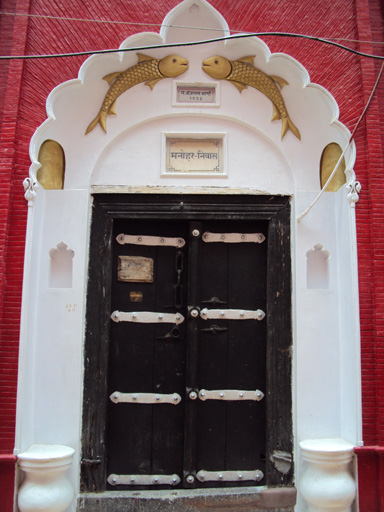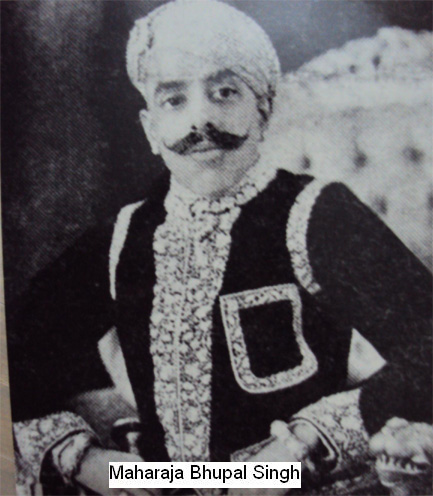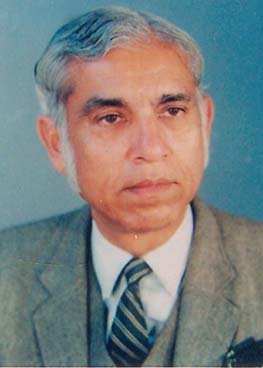The Historic Haveli of Sharga Family
A Symbol of Kashmiri Heritage
By Dr. B.N. Sharga
The Sharga family is one of
the oldest families of Lucknow which is living in Kashmiri Mohalla for the last
7 generations since 1775 when Nawab Asaf-ud-Daula of Awadh made Lucknow as his
seat of government instead of Faizabad and Kashmiri Mohalla came into existence
on a hill surrounded by beautiful gardens like Kashmiri Bagh, Wazir Bagh,
Angoori Bagh, Buniyad Bagh, etc and water bodies.

Our ancestors Laxmi Narain Kaul
Sharga and his younger brother Niranjan Das Kaul Sharga employed in the Mughal
army where brought from
Delhi
to Faizabad by Nawab Shuja-ud-Daula of Awadh and were made commanders of his
royal Mounted Guards responsible for the security of the main palace. They
fought in the battle of Buxar in 1764 on UP-Bihar border with the forces of
Nawab Shuja-ud-Daula of Awadh, Mughal emperor Shah Alam of
Delhi
, Raja Balwant Singh of Benares and Nawab Mir Qasim of Bengal to drive out the
British from
India
. The British under the command of Munroe gave a crushing defeat in this battle
and arrested Mughal emperor Shah Alam of
Delhi
and Raja Balwant Singh of
Benares
. But the British could not succeed in arresting Nawab Shuja-ud-Daula who was
safely escorted from the battle field by Laxmi Narain Kaul Sharga and Niranjan
Das Kaul Sharga to Farrukhabad showing exemplary courage. Farrukhabad at that
time was a strong centre of Afghan mercenaries who were employed as temporary
soldiers by different rulers to fight battles for them. Bahu Begum who was the
principal wife of Nawab Shuja-ud-Daula of Awadh became highly impressed and
pleased by the bravery and valour shown by Laxmi Narain Kaul Sharga and Niranjan
Das Kaul Sharga and recommended a royal wasika of 200 silver coins to each one of them per month to maintain
their status in the society. This royal wasika was granted by king Ghazi-uddin-Haider of Awadh in 1817 by
issuing a royal firman to that effect.
Durga Prasad Sharga who was the son of Laxmi Narain Kaul Sharga became a mushirkar
of Queen mother Malka Kishwar and Urdu and Persian teacher of King Wajid Ali
Shah. When king Wajid Ali Shah was removed from the throne of Awadh by general
Utterum on 7th Feb, 1856 Durga Prasad Sharga along with Malka Kishwar
consisting of 110 member delegation went to
London
in June, 1856 to plead the restoration of the throne of Awadh to king Wajid Ali
Shah before Queen
Victoria
of
England
. The British considered this act of Durga Prasad Sharga as disloyalty to the
British Crown and stopped the payment of wasika
to him which was subsequently restored in 1859 after a thorough probe.
Baij Nath Sharga built the
historic haveli in 1883 which was
designed on the pattern of a fort. He brought skilled craftsmen and masons from
Jaipur to build this haveli. Its
foundations were laid elephantine deep to make the whole structure solid and
strong. The walls are 3-4 feet in width which were built by highly baked thin
bricks popularly known as lakhouri eent
with urad ki daal and gur as
binding material. Each joint of the walls was further fortified by using
interlock system through wooden beams inserted inside the walls so that the
whole structure may not crumble down during an earthquake. The haveli
was divided into two sections one for the women known as Zanankhana
and the other for man and visitors known as Mardana.
The haveli has an inbuilt square open
space known as Aangan for women to
perform their daily household affairs. The haveli
has a well to provide drinking water as water supply through tap was not in
existence in the city at that time. It has a big airy room for comfortable
living dalaans for movement and secret
chambers for keeping valuables. The spacious roof of the haveli was used by the
women during the winter season to dry green vegetables, mungauri,
badiyan, and potato chips. There was no electric supply in the haveli
up to 1934. Big kerosene lamps were used to provide light during the evening
hours.
Our ancestors were skilled
horsemen and fencing experts so they were very fond of hunting which was
considered to be a most adventurous sport at that time. They had a good
collection of tiger, fox, and deer skins besides mounted heads of stag and deer
as trophies. They also had a good collection of different kinds of robes which
were used while attending the darbar.
They also had a good collection of arms like spears, daggers, guptis, different kinds of swords besides other rare articles and
artefacts. The antique English gun
of my grandfather Rai Bahadur Pandit Shyam Manohar Nath Sharga is on display in
the
Lucknow
museum. A good majority of those articles were stolen away by robbers in a big
theft which was committed in 1950 with the connivance of the servants. The haveli had a well equipped library with about 5000 books on
different subjects for the use of Kashmiri Pandits boys who used to come from
Kashmir to
Lucknow
for higher studies. They used to stay with the local families during their
studies. The Kashmiri Pandits at that point of time were highly orthodox and
superstitious. They did not take the food cooked by a person belonging to some
other caste group. Kashmiri Pandit
cook Nand Ram used to prepare mouth watering Kashmiri dishes for the inmates of
the haveli. This food was cooked from the fire of dhak woods which was duly washed before use. This library was
dismantled after the death of my grandfather in 1952. The books were given to
the interested persons.
The ration for the whole year
loaded on a bullock cart was brought by our Mukhtar Bhagwan Bux Singh from our zamindari
in Naubasta Khurd village on
Sitapur Road
. The green vegetables were supplied on a weekly basis when their supply was in
abundance among the relatives in the locality. The ration was properly stored in
specially designed huge containers made of brass metal. The wheat was first
washed and then dried on cloth sheets spread over cots and finally grinded in
big stone chakkis to make flour. Similarly, rice was preserved for a longer
duration by asserting big pieces of Lahori
namak in it. Likewise, pure spices
were prepared by grinding their raw ingredients in imamdasta into a fine powder by the maid servants.
There was a special place in the
haveli known as ducchatti for keeping big vessels and utensils with family name
engraved on them meant for cooking food in parties. They were given to the
community members on the occasion of marriage ceremonies which were duly
returned when such ceremonies were over. There was a very strong community
feeling at that tie due to which the community was able to maintain its distinct
identity intact without any dilution for about 200 years. Now the Kashmiri
Pandits organized such functions in hotels, farm houses, community centres and
restaurants with their own catering arrangement. The food cooked by a Kashmiri
Pandit cook on such occasion has now become a thing of the past.
My grandfather Rai Bahadur
Pandit Shyam Manohar Nath Sharga was Chief Justice of Udaipur Princely State
from 1934-1937. Maharana Udaipur Bhupal Singh became very happy with his work
and asked him to settle down in
Udaipur
permanently. My grandfather preferred to live among his relatives in his
hometown. My grandfather had a collection of about 200 costly and rare pigeons.
Some of them were even from foreign countries like
China
and
Japan
. There were two pigeon houses (Kabootarkhana)
specially build in the haveli to keep
them with all the facilities for their habitation and breeding. They were fed on
jaw, bajra and gram. Their periodical medical check up was done by veterinary
doctor to assess their state of health. Some most favourite ones used to wear
silver rings with small bells in their legs. The Choya
Chandan breed used to dance like a peacock to express its happiness whereas Sheerazi
variety had a royal look. They were taken out in the morning for their flight in
the sky. A large bamboo stick with a piece of cloth tied at its end along with a
whistle producing a special sound was used to guide and control these flights.
Saffron paste was applied under their wings to attract other pigeons to their
fold. This was a very popular sport in that era. Pigeon lovers used to come to
watch their antics.

During the winter season open dalans
were covered by thick jute curtains to prevent icy cold, chilly winds. Kangris
from
Kashmir
were taken out and filled with burning wood coal to keep the body warm. Samavar
was also there to provide hot tea at a moments notice. Under this backdrop the
story telling session of my grandmother used to start. Though my grandmother
Mrs. Dhanrani Sharga who was the granddaughter of honourable Bishembhar Nath
Sahab, a member of the Viceroys Imperial Council but she had no formal
education. Somehow, she had a great command over narrating stories, especially
Arabian tales to the minutest detail creating a great interest among the
children. Her stories used to run for weeks together like a TV serial developing
a great curiosity among the children to know the end of the story which was a
great binding force between her and the children. She used to give roasted
potatoes from the Kangri with salt and
black pepper to the children to keep their interest in their story telling
session intact. Our panda Kailash Nath from Matan in
Kashmir
used to come in every winter season with his young son wearing firan,
white turban on his head with a big tilak
mark keeping big bahis to note down
the new arrivals and deaths in the family to keep their records. He was properly
entertained and some money was paid to him for his travelling expenses.
Sheermaal prepared by Shunkru with nimish
used to be the most favourite breakfast in winters.
The haveli was an epicenter of cultural, social, and political
activities of eminent Kashmiri Pandits during the latter part of 19th
century and early part of 20th century. They used to assemble here
for academic debates and discussions over the issues if national and
international importance due to the influence of Barrister Bishen Narain Dar,
who became president of Indian National Congress in 1911. Many stalwarts of the
freedom struggle visited this haveli.
People like Major Dr. Madan Pyare Lal Atal who died in action in World War-I in
France
, Dr. Madan Atal who died in China in 1954 and got a state funeral there
attended by Chou EnLai, Pandit Jagat Narain Mulla, who was a minister in the
interim government of 1919, Dr. Annie Besant, Panidt Madan Mohan Malviya, Dr,
Hriday Nath Kunzru, Pandit Sri Ram Taimni who was a Wazir-e-Wazarat in Kashmir, Pandit Moti Lal Nehru etc were regular
visitors to the haveli.
During the nawabi period from
1775 upto 1856 Kashmiri Mohalla was an exclusive locality of Kashmiri Pandits
with a population of about 1000 families. Their havelis were interconnected through secret passages for the movement
of women so that they may not have to come out roads for visiting their
relatives exposing themselves to a great security risk because the police system
was not there at that time. It was introduced by the British after 1862. The
people were supposed to take their own security arrangements. After sunset life
used to become standstill as people prefer to remain indoors. The dacoits used
to come on horses to hit their targets after the sunset with a prior notice
without any fear. Gurkhas from
Nepal
armed with spears in their hands and khukris
fixed in their belts used to guard the main gate of the haveli
to keep an eye on the visitors. The main gate has a pair of fish which is
considered to be a sign of peace, prosperity and good omen in Awadh. Great men
create landmarks and set benchmarks. It is a sad commentary that the Kashmiri
Pandits somehow could not maintained and managed their ancestral properties and
made desperate sales at throwaway prices perhaps due to the affect of Kaal
Sarp yog on their head. (The writer covers a period upto 1960).
| 















No one has commented yet. Be the first!